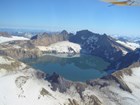This issue is all about volcanoes! Learn more about the landscape of Katmai and the Alaska Peninsula and its remarkable history.
-
Article 1: The Valley of Ten Thousand Smokes: Revisiting the Alaska Sublime

The story of the Valley of Ten Thousand Smokes begins on June 6, 1912, with the largest volcanic eruption recorded on Earth during the twentieth century. The eruption took place on the Alaska Peninsula 100 miles (161 km) west of Kodiak, Alaska. In three days, a new volcano, Novarupta, was born. Read more
-
Katmai National Park & Preserve
Article 2: The Great Eruption of 1912
Home of the largest volcanic eruption in the history of North America, Novarupta, The Valley of Ten Thousand Smokes, and the Katmai volcanoes have been an open-air laboratory since shortly after the 1912 eruption. Volcanological studies here have shaped how geologists think about explosive eruptions and continue to provide insights into a wide range of aspects about how volcanoes work. Read more
-
Article 3: Katmai National Park Volcanoes
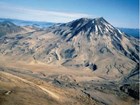
The explosive eruption of Novarupta on June 6-8, 1912, was the world’s most voluminous of the twentieth century and made the remote Katmai region famous. But Novarupta is hardly alone in the area. It is part of the Aleutian volcanic arc, the curving chain of volcanoes extending from southcentral Alaska to the far western end of the Aleutian Islands, and one of the most active volcanic regions in the world. Learn more about this region heavily influenced by volcanoes. Read more
-
Article 4: Volcanic National Natural Landmarks in Alaska
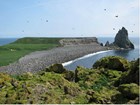
The National Natural Landmarks (NNL) Program was established in 1962 by the Secretary of the Interior under the authority of the Historic Sites Act of 1935. Managed by the National Park Service, the primary goals of the program are to recognize and encourage the preservation of the best remaining examples of the major biotic communities and geologic features in the nation’s natural landscape. Learn about six outstanding examples of different volcanic structures in Alaska. Read more
-
Article 5: Using Rocks to Reveal the Inner Workings of Magma Chambers Below Volcanoes in Alaska’s National Parks
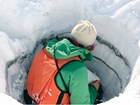
Alaska is one of the most vigorously volcanic regions on the planet, and Alaska’s national parks are home to many of the state’s most active volcanoes. One goal of volcanology is to determine the processes that drive or trigger eruptions. Information recorded in the rocks tells us about these processes. Here, we demonstrate how geologists gain these insights through case studies from four recent eruptions of volcanoes in Alaska national parks. Read more
-
Article 6: Earthquake Studies Reveal the Magmatic Plumbing System of the Katmai Volcanoes

The 1912 eruption of Novarupta was the largest of the 1900s. It used to be believed that there was one large anomalous zone centered beneath Katmai Pass, but scientists have now found that instead there are several large separate anomalous zones, one each beneath Katmai, Trident-Novarupta, and Martin-Mageik. Learn more about how they tested these theories. Read more
-
Article 7: Volcanic Earthquakes in Alaska’s National Parks
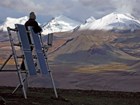
Alaska’s national parks contain 11 historically active volcanoes, which produce thousands of small earthquakes every year. These earthquakes are voices of the magmatic and geothermal systems within the volcanoes. The Alaska Volcano Observatory (AVO) monitors volcanic earthquakes year round with networks of seismometers. Learn about what they've found. Read more
-
Article 8: Pre-1912 Glacial and Volcanic History near Windy Creek, Katmai National Park and Preserve, Alaska

The Alaska Peninsula hosts a chain of glacier-clad volcanoes that generally hug the southern coastline of the peninsula. One of the most notable chapters in the recent geologic history of the Alaska Peninsula took place in 1912, when a major ignimbrite-producing eruption occurred in the Katmai area. Learn about the pre-1912 surficial deposits of the Katmai area and the Quaternary geologic history of the region known as Windy Creek valley. Read more
-
Article 9: Witness: Firsthand Accounts of the Largest Volcanic Eruption in the Twentieth Century
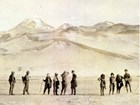
Read historic, personal accounts from those who experienced this massive volcanic eruption. Read more
-
Article 10: Out of the Ashes: The Katmai Disaster
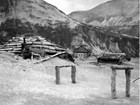
The eruption of Novarupta Volcano near Katmai on June 6, 1912 was a well-documented disaster that destroyed the villages of Katmai, Douglas, and Savonoski, as well as a number of fish camps on the Alaska Peninsula and a commercial salmon saltery at Kaflia Bay. To the inhabitants, the eruption marked an abrupt end to the old way of life. To anthropologists, actions taken in response to the eruption exposed and tested the resilience of the local culture and society. Read more
-
Article 11: Ecological Recovery After the 1912 Katmai Eruption as Documented Through Repeat Photography
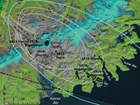
The eruption of Novarupta in 1912 in Katmai National Park and Preserve was the largest in recent history and devastated a large mountainous and coastal region. In 2004, the National Park Service initiated an effort to acquire, relocate, and rephotograph some of these scenes as part of a larger effort to document changes in the landscape throughout the park lands of southwestern Alaska. Read more
-
Article 12: Effect of the Novarupta (1912) eruption on forests of southcentral Alaska: Clues from the tree ring record
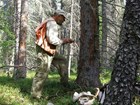
Trees represent one of the most important records of environmental change on Earth. Tree growth, as recorded in the width of annual rings, can be useful for identifying the local to global effects of volcanic eruptions, and for comparing these effects with historical records across large areas. Learn more about how trees in southcentral Alaska were affected by the Novarupta eruption in 1912. Read more
-
Article 13: Possible Effects of a Volcanic Eruption on the Nearshore Marine Environment

Volcanic eruptions are infrequent disturbance events that vary in magnitude and type, which effects how ecosystems respond to these disturbance events. Here, an overview of literature and field accounts are summarized from three volcanic eruptions that occurred on the Alaska Peninsula. These three eruptions, which differed greatly in magnitude and type, are presented to illustrate the range of effects that these eruptions have on the nearshore marine ecosystem. Read more
-
Article 14: Bringing the World to a Standstill: An Investigation into the Effects of a Novarupta Scale Volcanic Eruption on Today’s Aviation Industry

One hundred years ago the Novarupta Volcano erupted, sending ash over the globe, and was the biggest eruption of the twentieth century. The ash settled over the U.S.A., Canada and as far as Africa. Today, the North Pacific is one of the busiest air corridors in the world. This project investigated the possible effects on eruption of a Novarupta-scale eruption. Its size and location below a busy air corridor made it ideal for the study. Read more
-
Article 15: Concluding Thoughts. Can Another Great Volcanic Eruption Happen in Alaska?
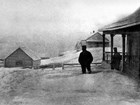
A Novarupta-scale eruption is almost certain to happen again in Alaska; the question is when. The heavy ash fall produced by a Novarupta-scale eruption occurring today in southern Alaska would have economic and environmental impacts in Alaska and beyond. Read more

